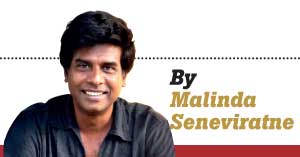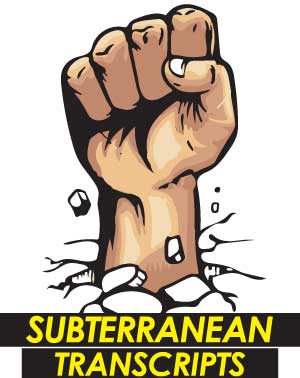Reply To:
Name - Reply Comment
Last Updated : 2024-04-26 14:35:00

Any discussion on claims which contain words such as ‘traditional’ or ‘historical’ can make sense only if assertions are backed by facts and not by myths. They should be buttressed by a corpus of evidence that are coherent and wholesome, and are not marked by the errors of selectivity. In an article where he sets himself the task of refuting an allegation that ‘the claim of traditional/historical homelands (of Tamils) is a load of balderdash, unsupported by any kind of evidence,’ (see ‘Wigneswaran and the puppeteering with ghosts) P. Soma Palan (PSP hereafter) appears to have inadvertently reinforced my assertion (see his article ‘Claim of traditional homeland: Not a load of balderdash’).
PSP dwells at length on the Vijaya Legend. He calls it a myth and yet by sleight of hand typical of Eelam myth-modellers and in contradiction of his own myth-claim insists that the real name is ‘Vijay’ or ‘Vijayan’ (a ‘Tamilization’ that has become ‘par for the course’ in creative Eelamist historiography). The reference to Vijaya is taken from the Mahawamsa of Mahanama Thera in the 5th Century. It is an epic narrative in Pali. We cannot as yet take it as the truth, the whole truth and nothing but the truth and we certainly cannot call it a total fabrication either; the veracity of certain parts have been established by archaeological excavation and by corroboration via other texts while certain other parts remain unsubstantiated. The Vijaya legend belongs to the latter kind.

To make sense, it is useful to revisit the chronicler’s disclaimer. Mahanama Thera observes that the narratives (in text or other form) of the ancients (those who came before) are at times overly lengthy, at times all too brief and at times repetitive. He claims that his was an exercise of eliminating error and laying it out for easier comprehension and for the delight (of the reader). What was left out and what was added, we cannot be definite about as per available evidence. For the historian it is a useful document that provides a base-text and innumerable clues, nothing more and nothing less. PSP asks me a bunch of questions, all based on the assumption that I’ve bought the Vijaya Legend. I have not. The ‘refutation’ of the Vijaya Legend that PSP offers is that ‘no race is founded by an individual’. This is absolutely correct, but he’s making too much of a symbol or a signifier. It is not that Vijaya descended from nowhere and founded a race of sons and daughters who inter-married and had children of their own and multiplied. What’s important is not the name, but the process.
It is reasonable to assume that Vijaya was not the first (and certainly not the last) ‘prince’ who came to the island with an entourage and with a conquistador’s designs. For the chronicler his arrival was clearly significant enough in terms of impact on political control to give it the privilege of ‘starting point’. This does not mean that the island was inhabited or only sparsely inhabited at the time. Neither do we know for sure the ‘clan names’ if you will of the indigenous peoples. We do know that a document compiled by a South Indian Buddhist monk in the 1st or 2nd Century CE titled ‘Seehalavattuppakara’ referring to a community by the name ‘Seehala’. We know that there are references to various communities in early inscriptions but none in which a Tamil trace can be found. There are no references to any Tamil community or even a non-Tamil Dravidian community or any community with any trace of “Tamils, Telugu, Kannada and Malayalees” that PSP claims inhabited the island ‘before Vijaya’s arrival’ (he seems to believe the ‘myth’!). I would love to examine his sources on this. The relevant cave inscriptions, by the way, are in Sinhala Prakrit. If indeed this was a ‘Tamil Island’ as PSP claims and if it were Tamils who were converted to Buddhism, surely there would have been some references, some caves, a dozen or even one with South Indian ‘Brahmi’ characters? None!
More on language, later. Let’s consider the ‘evidence’ that PSP offers. Ravana! It’s a nice story and interestingly written, true, but it’s as much ‘legend’ as the VIjaya story if not more. That was a story that was popularized elsewhere. The place names that PSP refers to are of relatively recent origin, this side of the Gampola Period to be more precise and possibly explained by several waves of immigrants being allowed to settle in various parts of the island by the kings of the time which are interestingly the very same places where ‘ravana legends’ and ‘ravana place names’ exist! That’s ‘history’; what PSP offers is conjecture. No evidence.
PSP likes to confuse terms. Hindu, for him, indicates Tamil. Non-Buddhist by implication has to be Hindu. Of course the people who lived before the arrival of Arahat Mahinda had their own religious beliefs, some of which were quite possibly related to present day Hinduism. The Island was never isolated. There have even been Buddhists too before Arahat Mahinda, as evidenced by begging bowls discovered in Anuradhapura dating back to pre-Mahindian times as well. Texts such as the ‘Divyavadana’ believed to have been written in the 1st Century CE speak of Buddhist missions that arrived in the Island from time to time, dating back to the time of the Buddha. What’s pertinent is that there is little evidence to say that even if there was any Hindu trace in these cosmologies there is even less ‘Dravidian’ markings and nothing of ‘Tamil’.
“The ancestral progenitors of present day Sinhalese are the converted Tamil Buddhists,” PSP claims. So, did Tamils drop language, create a new language and transformed into a different ‘ethnicity’ just because they converted to Buddhism (as claimed)? Whatever date the name ‘Sinhala’ came to be identified with the vast majority of people in the Island, what is clear is that there was a process involved and that if there indeed was any Tamil trace it was marginal. If ‘Tamil’ was erased by racist ‘Sinhala’ chroniclers, it is indeed strange that of the 15-20 names given to the Island by outsiders there is not one that has any Dravidian trace, leave alone a Tamil one.
PSP is full of myth and legend. In addition to the Ravana Legend, he says that the Kataragama temple (Tamilized as per his whims to ‘Kathiragamam’) existed around 13,000 BC. He offers no evidence. What we do know is that he’s speaking of the Mesolithic Age, the time of hunters and gatherers who didn’t have any fixed abode. “The existence of pre-Vijayan and pre-Buddhistic Hindu temples, millennia before the arrival of so-called Vijay and Arahat Mahinda, proves that the Tamils and other Dravidian Hindu races, was the majority population of Lanka,” he claims, but what’s this evidence?
PSP’s most ‘potent’ devise is language, or rather its corruption; more precisely the easy and utterly a historical mechanism of Tamilising. He says Devanampiyatissa was actually Devanambya Alwar Tissan (a Telugu Hindu, according to him). He offers that the real name of Arahat Mahinda was Mahendra, which would make Emperor Ashoka a Tamil!
There are broadly two kinds of ‘Brahmi characters’, those found in the Northern part of what’s now India and those found in the South. There are some ‘Southern’ characters in inscriptions found on this island, but they are very rare and are greatly overwhelmed by the northern forms or rather forms that can be said to have some relation to characters that are found in the northern part of the subcontinent. The existence of southern forms at best indicates what is not denied — interaction across the straits; but to extrapolate such existence to a significant and indeed a majority Tamil community without explaining the predominance of non-Southern forms is mischievous. The myth that Sinhala was based on ‘Tamil Alphabetics’ has been comprehensively debunked, PSP is probably not aware.
In any event, what happened to the Tamils that he claims were the dominant population of this island? PSP speaks of ‘Tamil Buddhists’. Of course there may have been Tamil Buddhists, but Buddhism is a doctrine, a philosophy and for some a religion, and one that has been embraced by people speaking many, many languages. Embracing a doctrine does not mean one has to abandon one’s language, surely? Where are the Tamil Buddhist texts, on stone or parchment? If they were so dominant, why didn’t we see a Tamil script evolving in this island, i.e. one drawing heavily from the Southern Brahmi characters?
If we follow PSP’s logic, the ‘Sinhalese’ as such must have been quite a race to convince others to abandon their language and be reticent in bed while they (the Sinhalese) orchestrate natural population increase.
With respect to the issue of numbers and percentages, PSP takes us through the myths dealt with the above, but carefully refuses to address the issue of the here-and-now — that pernicious fudging of the multi-ethnic-multi-religious narrative where proportions are absent(ed). Even if we cite ‘war’ and ‘economic push and pull’ to explain why almost half the Tamils live outside the ‘historical homeland’ the overall percentages tell a story and one of land-grab intent by extreme elements of an otherwise highly civilized community.
Toss in the absence of history and we are left without ‘traditional’ and ‘historical’ with respect to ‘homeland’. We don’t even have to comment on the (ir)rationality or rather the arbitrariness of the British in drawing provincial boundaries.
I hoped that some Eelamist ‘historian’ would come out with some facts. Instead, PSP, possibly a well-meaning Sri Lankan who wishes the best for all Sri Lankans, has arrived with a thin portfolio but one filled with more myths and legends and questions obtained from such things. I must say I am disappointed.
John Thursday, 23 February 2017 04:53 AM
Sinhalese and Tamils both had great civilisations in the past.But the Tamils simply dominated the Indian Ocean and brought Countries from Madagascar to Indonesia under their control with their powerful navy.And specially Jaffna Tamils who are Hindus and of superior Vellalar caste are connected to this Tamil domination which lasted for nearly 500 years.
kondaya77 Thursday, 23 February 2017 11:06 PM
How about the lions who are extinct in Sri Lanka? LOL

Add comment
Comments will be edited (grammar, spelling and slang) and authorized at the discretion of Daily Mirror online. The website also has the right not to publish selected comments.
Reply To:
Name - Reply Comment
US authorities are currently reviewing the manifest of every cargo aboard MV
On March 26, a couple arriving from Thailand was arrested with 88 live animal
According to villagers from Naula-Moragolla out of 105 families 80 can afford
Is the situation in Sri Lanka so grim that locals harbour hope that they coul